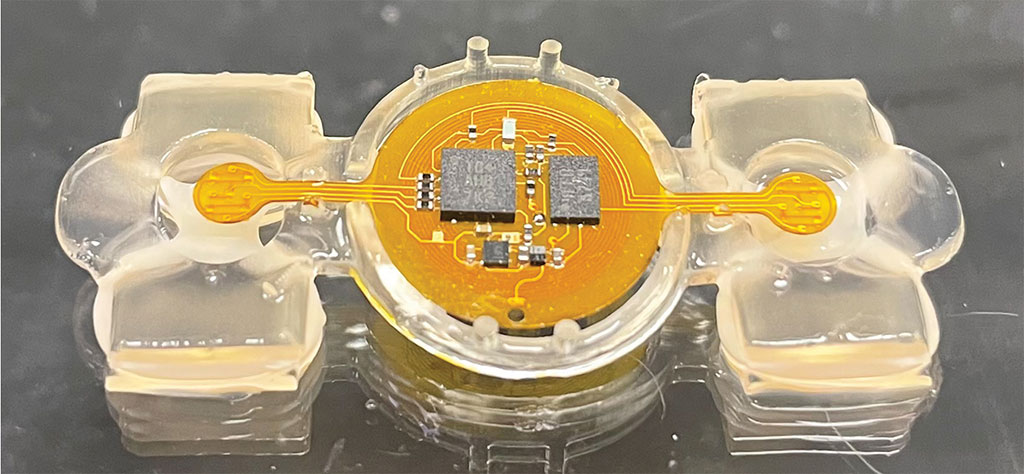Remotely Controlled Miniature Biological Robots Could Be Used for MIS and Detection of Disease Biomarkers
Posted on 23 Jan 2023
A team of researchers has developed remotely controlled miniature biological robots that could find potential applications in medicine, such as minimum invasive surgery or detection of cancer within the human body.
The hybrid “eBiobots” are the first to combine soft materials, living muscle and microelectronics, according to researchers at the University of Illinois Urbana-Champaign (Champaign, IL, USA), Northwestern University (Evanston, IL, USA) and collaborating institutions. They have described their centimeter-scale biological machines in the journal Science Robotics.

Researchers at the University of Illinois Urbana-Champaign had earlier developed biobots, which are small biological robots powered by mouse muscle tissue grown on a soft 3D-printed polymer skeleton. In 2012, the team had demonstrated walking biobots. In 2016, they had also demonstrated light-activated biobots which provided the researchers with some control. However, the inability to deliver the light pulses to the biobots outside of a lab setting limited their practical applications. This time, researchers at Northwestern University helped integrate tiny wireless microelectronics and battery-free micro-LEDs, allowing them to remotely control the eBiobots.
With the aim of providing freedom of movement to the biobots in order to make them suitable for practical applications, the researchers focused on eliminating bulky batteries and tethering wires. The eBiobots use a receiver coil to harvest power and provide a regulated output voltage to power the micro-LEDs. The researchers are able to send a wireless signal to the eBiobots that prompts the LEDs to pulse. The LEDs stimulate the light-sensitive engineered muscle to contract, moving the polymer legs so that the machines can “walk.” The micro-LEDs are so targeted in a way that they can activate specific portions of muscle, making the eBiobot turn in the desired direction.
Using computational modeling, the researchers optimized the eBiobot design and integrated the components for robustness, speed and maneuverability. The iterative design and additive 3D printing of the scaffolds enabled rapid cycles of experiments and improvement in performance, according to the researchers. The design offers potential for future integration of additional microelectronics, such as chemical and biological sensors, or 3D-printed scaffold parts for functions like pushing or transporting things that the biobots can encounter. The integration of electronic sensors or biological neurons could allow the eBiobots to sense and respond to biomarkers for disease, among other possibilities.
“Integrating microelectronics allows the merger of the biological world and the electronics world, both with many advantages of their own, to now produce these electronic biobots and machines that could be useful for many medical, sensing and environmental applications in the future,” said study co-leader Rashid Bashir, an Illinois professor of bioengineering and dean of the Grainger College of Engineering.
“In developing a first-ever hybrid bioelectronic robot, we are opening the door for a new paradigm of applications for health care innovation, such as in-situ biopsies and analysis, minimum invasive surgery or even cancer detection within the human body,” said co-first author Zhengwei Li, an assistant professor of biomedical engineering at the University of Houston.
Related Links:
University of Illinois Urbana-Champaign
Northwestern University














